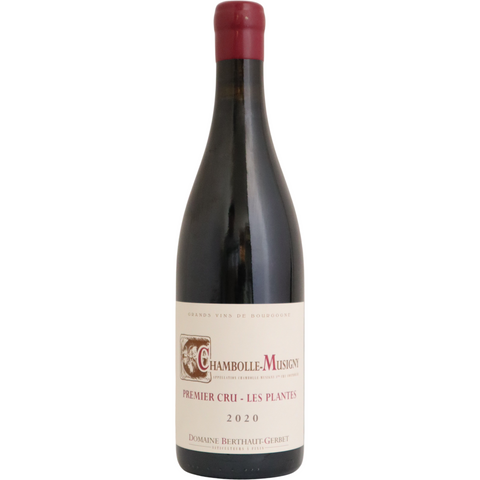
2022 Domaine Berthaut-Gerbet Chambolle Musigny 1er Cru "Les Plantes", Burgundy, France
A classic age-worthy Burgundy from a beautiful vintage. The "Les Plantes" premier cru vines were planted near the Route des Grands Crus between 1950-1987. This wine is fresh, vibrant, and has medium weight with subtle minerality and firm finish.
ABOUT THIS WINE
.25 hectares of clay-loam-sandy soil with limestone. The pinot noir vines were planted near the Route des Grands Crus between 1950-1987. 10% whole cluster harvest in cold preferential stainless steel vats and concrete. 1 to 2 pumping overs per day, pigeages at the end of fermentation. Aged 15 months in barrels, 20% new.
ABOUT THIS PRODUCER
In 1693, a motto was carved into a stone lintel in the Berthauts' house: Bien faire vax miev que dir, “doing right is better than talk.”
Amélie has received an impressive array of vineyards from her mother and father who owned and managed separate family domaines. The newly-baptized Domaine Berthaut-Gerbet includes all the vineyards of Domaine Denis Berthaut and parts of the vineyards of Domaine François Gerbet, totaling 16 hectares located in the Hautes-Côtes de Nuits, in the villages of Fixin, Gevrey-Chambertin, Chambolle-Musigny, Vougeot, and Vosne-Romanée. Everything at Berthaut-Gerbet now points to the hatching of a Grand Domaine. It will be gradual, thought-out, and real. This brings us to another saying carved on an ancient lintel in the building that serves as Berthaut’s tasting room and office: Rien par force, tout par amour, “nothing by force, all by love.”
There is increasing use of stems, though not systematically, and in greatly varying proportions, from 0 to 60%.
Like her father, Amélie prefers to ferment in cement tanks and has added new ones. She has painted the old as well as the new her favorite color —you will encounter it throughout the winery and the vineyards— a Red-Violet, RAL color 4002 to be precise. She wanted the domaine’s latest tractor to be that color, but her father refused.
Extraction is delicate. The wines are only pumped over until the end of fermentation, when they are punched down lightly by foot, a total of only four times on average.
To eschew aging in tank or in her father’s old foudres, Amélie has had to acquire a double set of barrels quickly. (You need one full set for each of the two vintages in the cellar.) Consequently, there has been a little more new oak than she would like. Though her goal is 0 to 25% new oak depending on the wine. Some of the more prestigious cuvées have seen a higher proportion because they are small —one to three barrels— and because she was following the conventional wisdom of aging those in higher proportion of new wood because they could take it. She is rethinking that, and may put the newer barrels on the lesser cuvées, their larger production making it easier to absorb the new oak.
The wines are never fined. Light filtration is carried out on wines that are bottled early, usually the Bourgogne Les Prielles. At bottling, Amélie aims for 20 ppm free sulfur.
